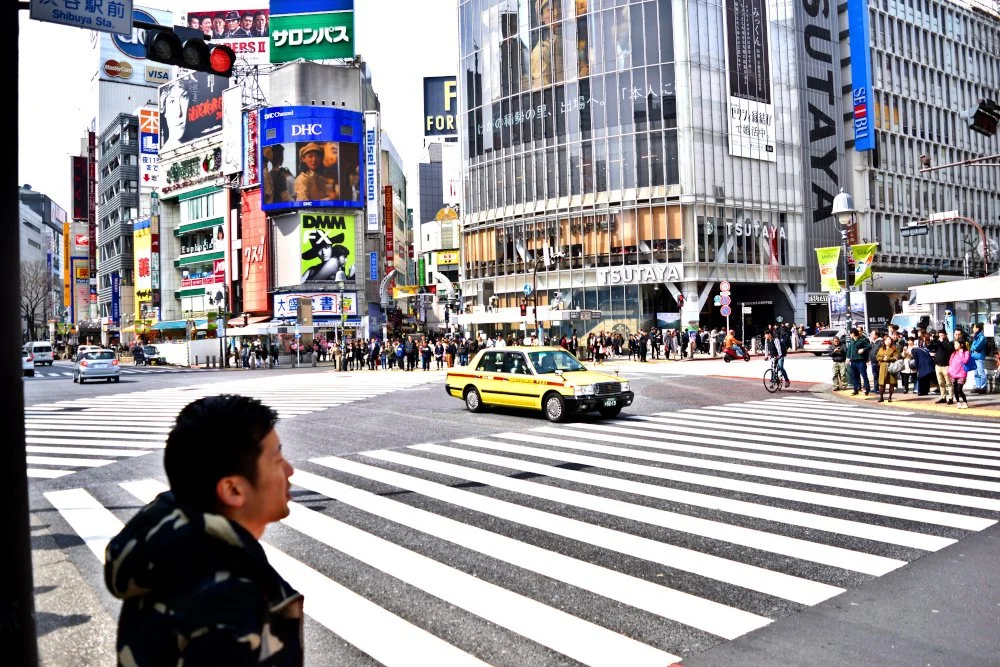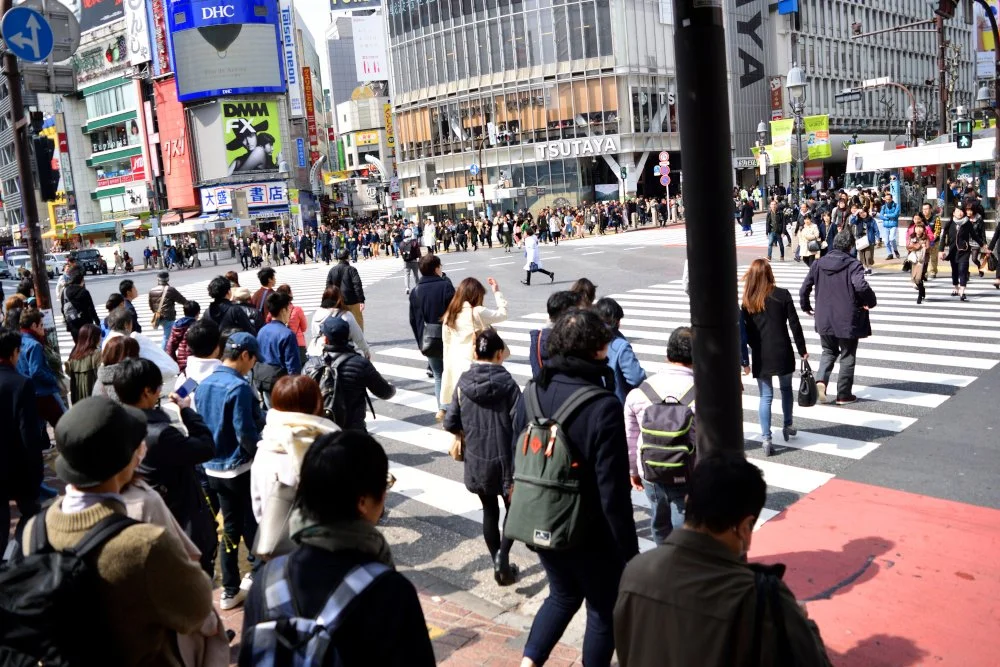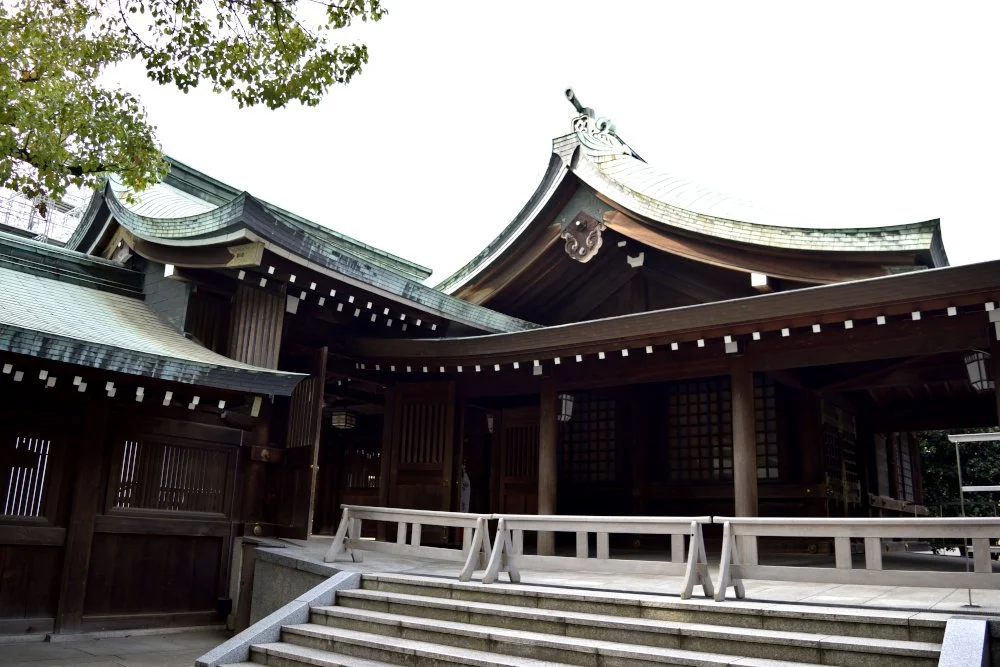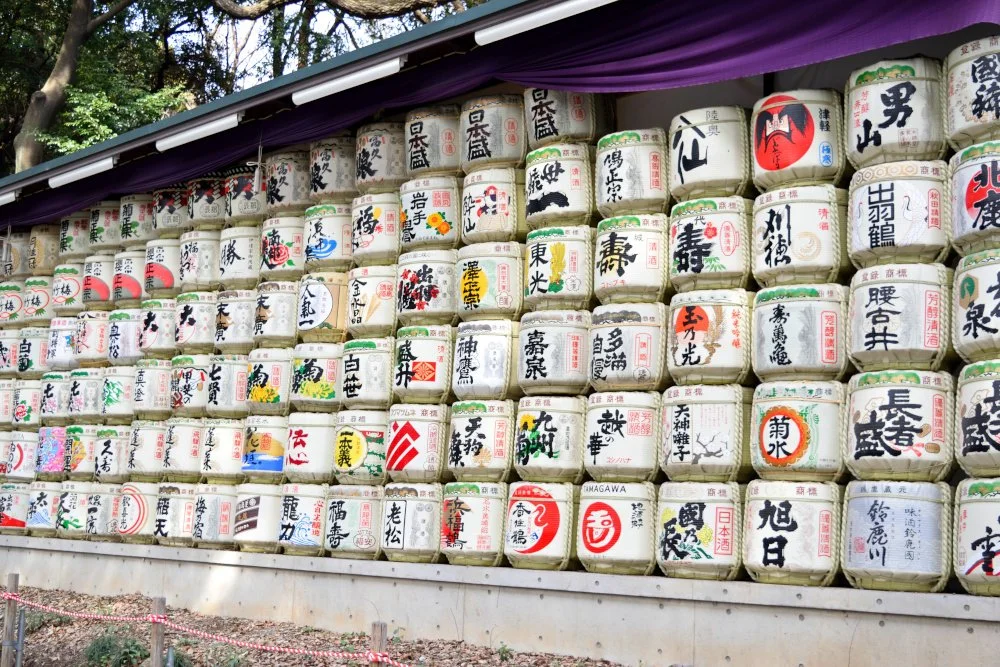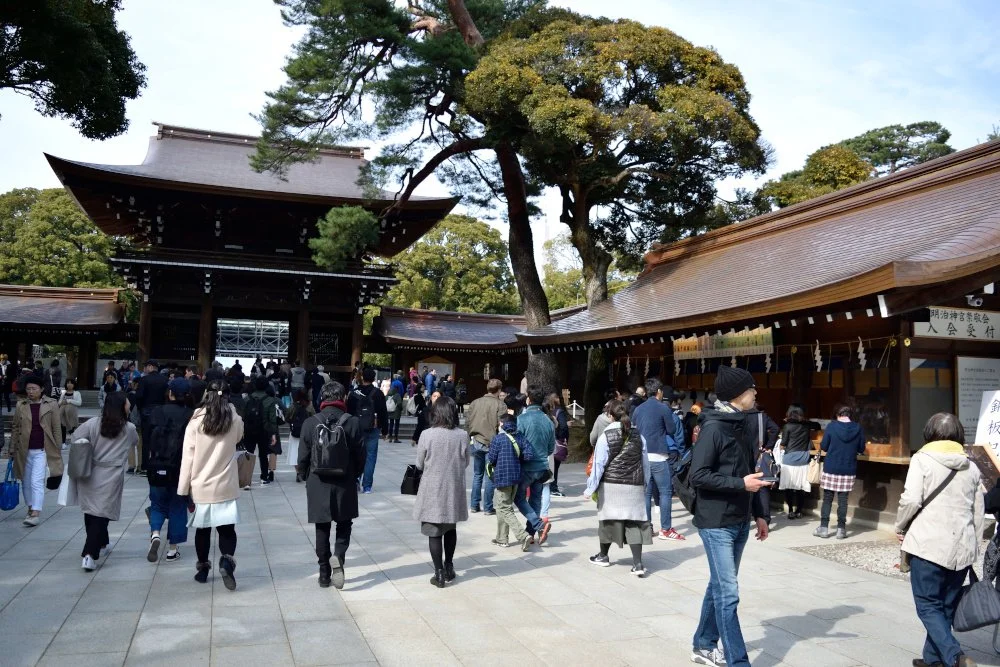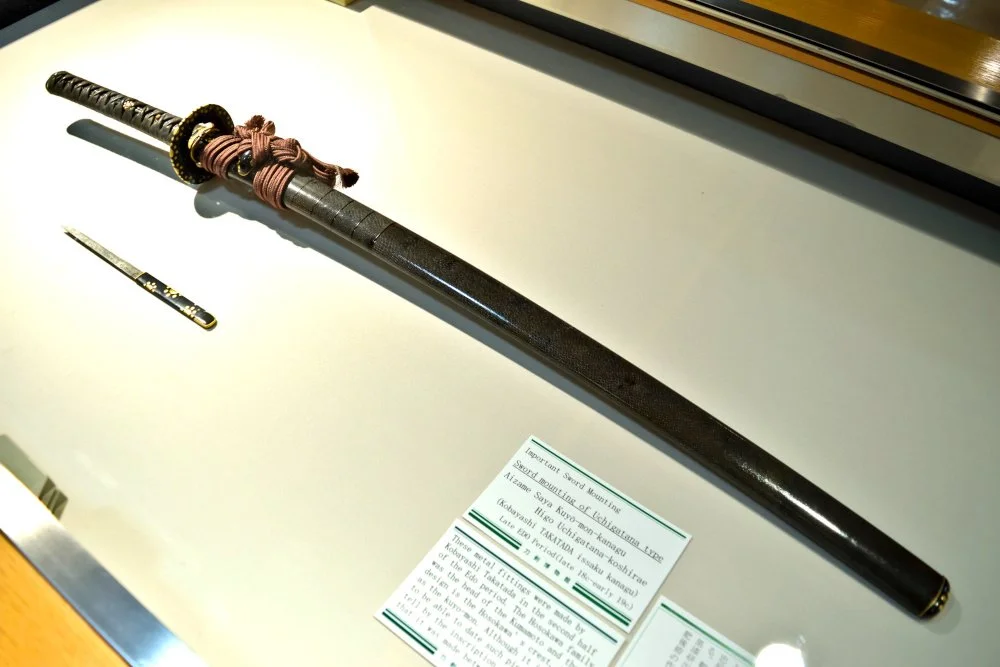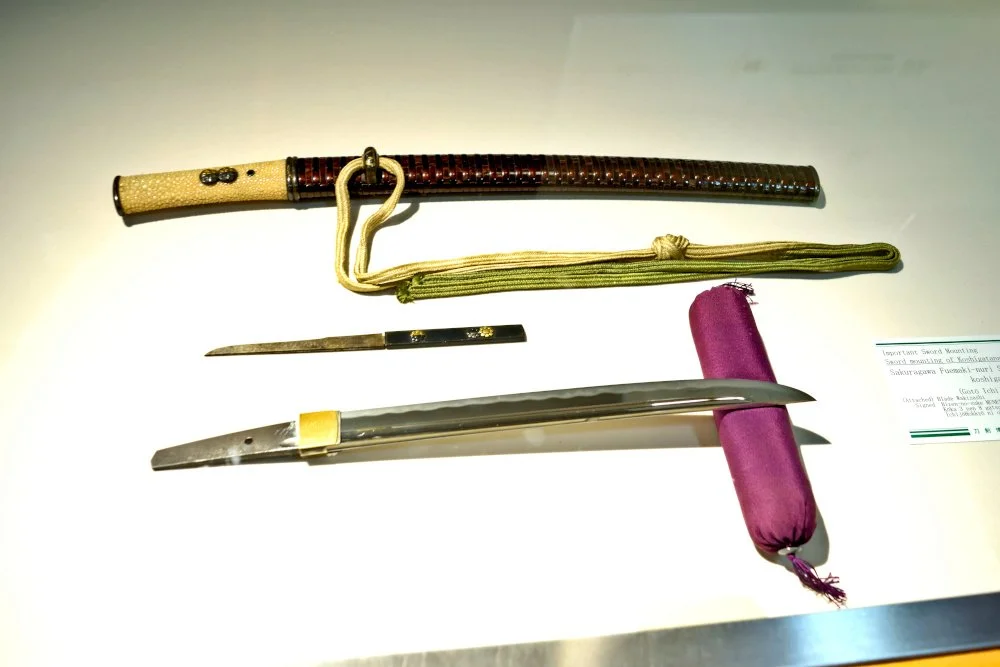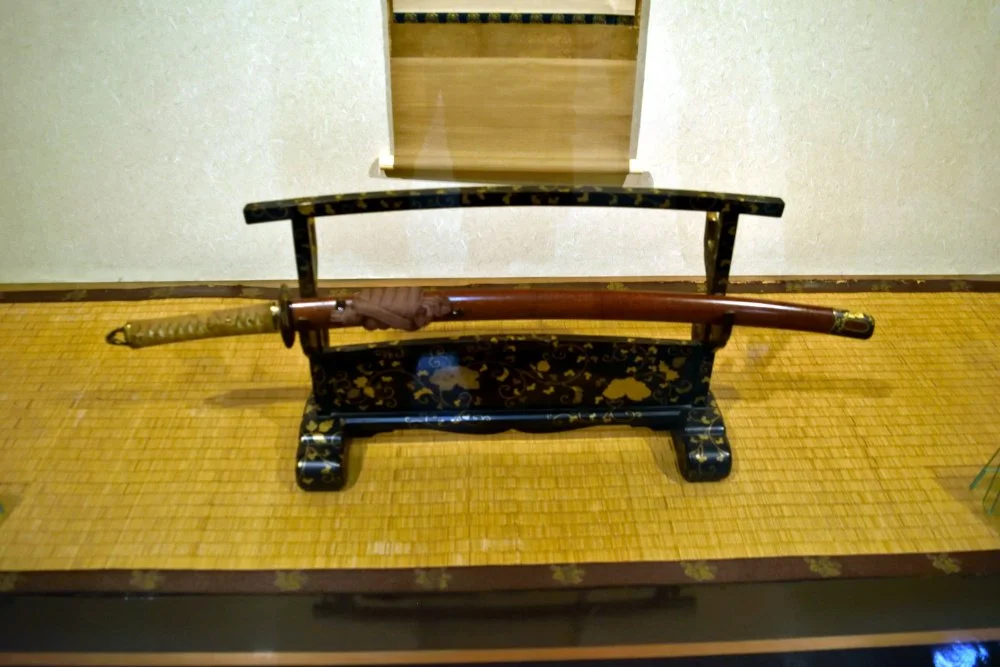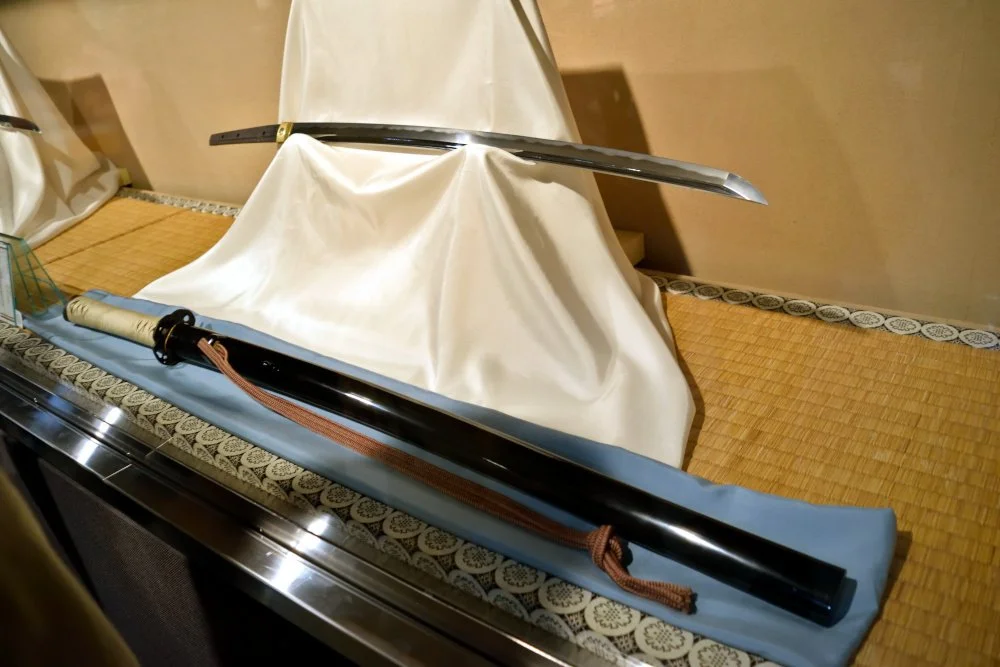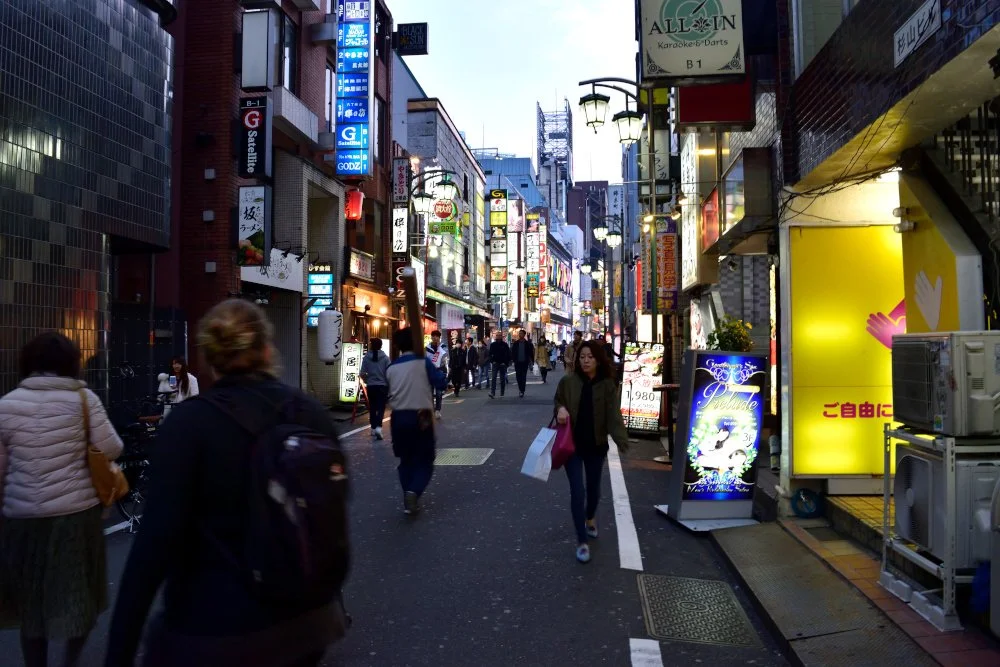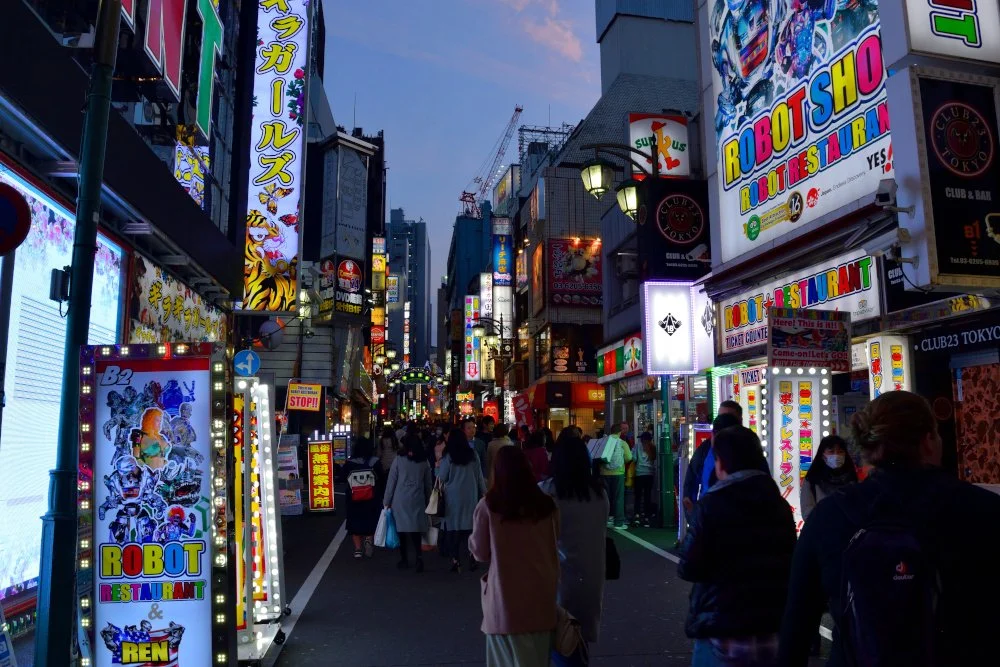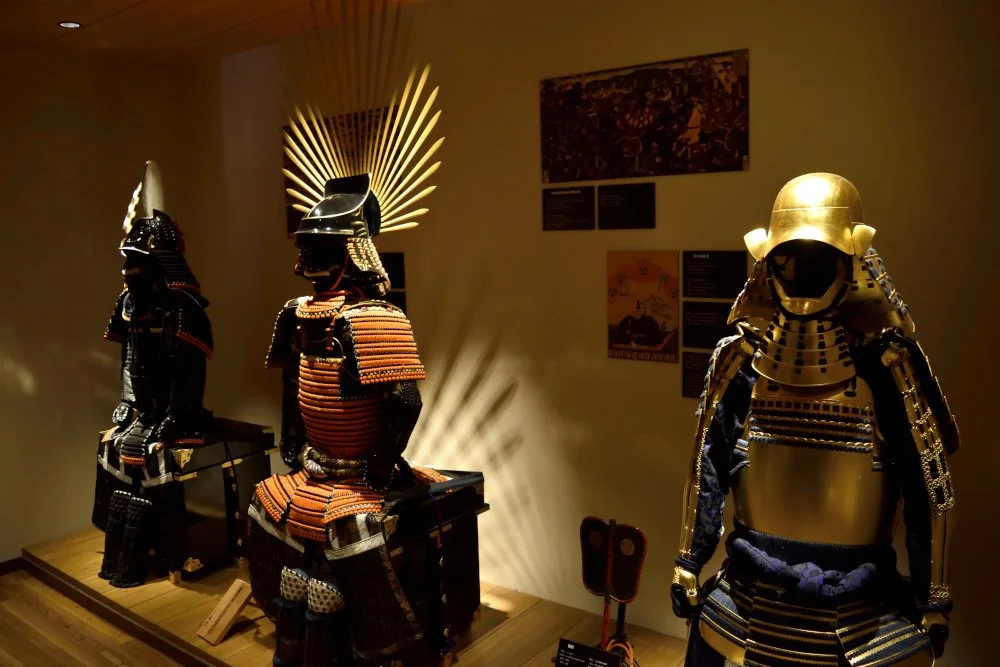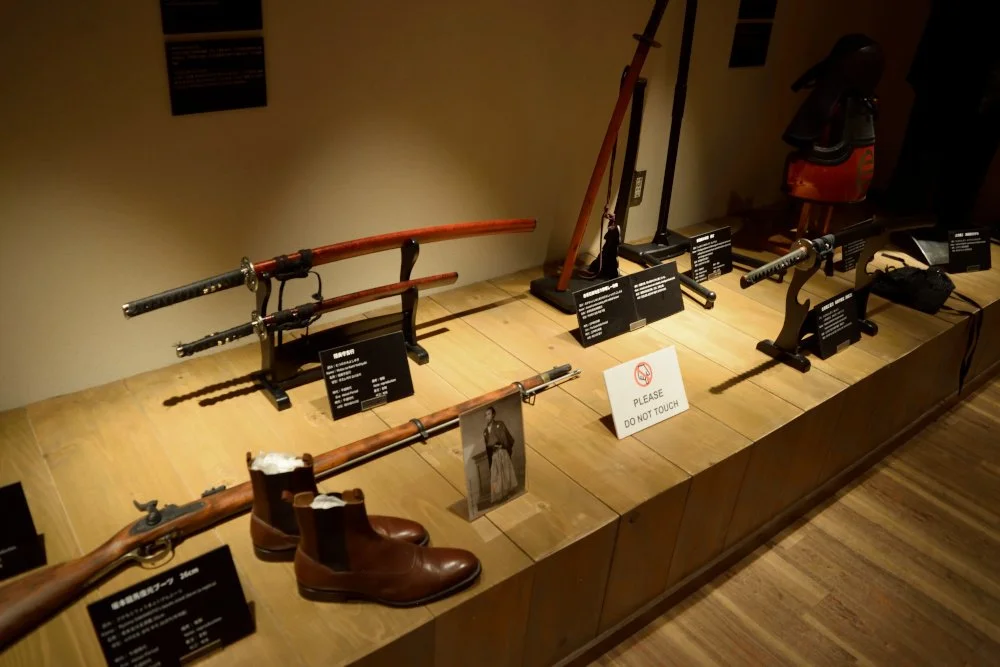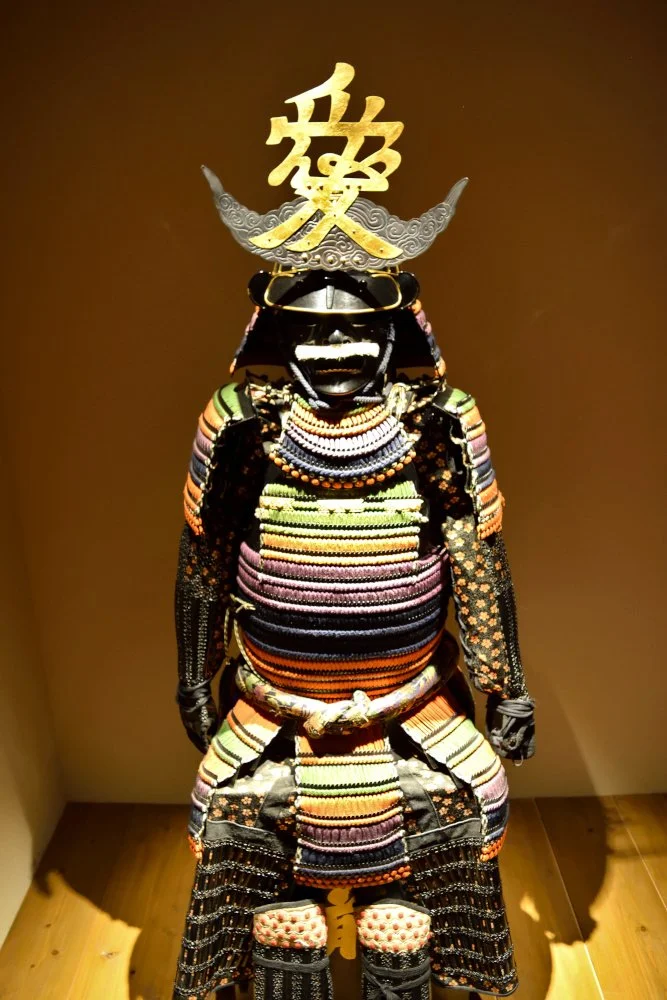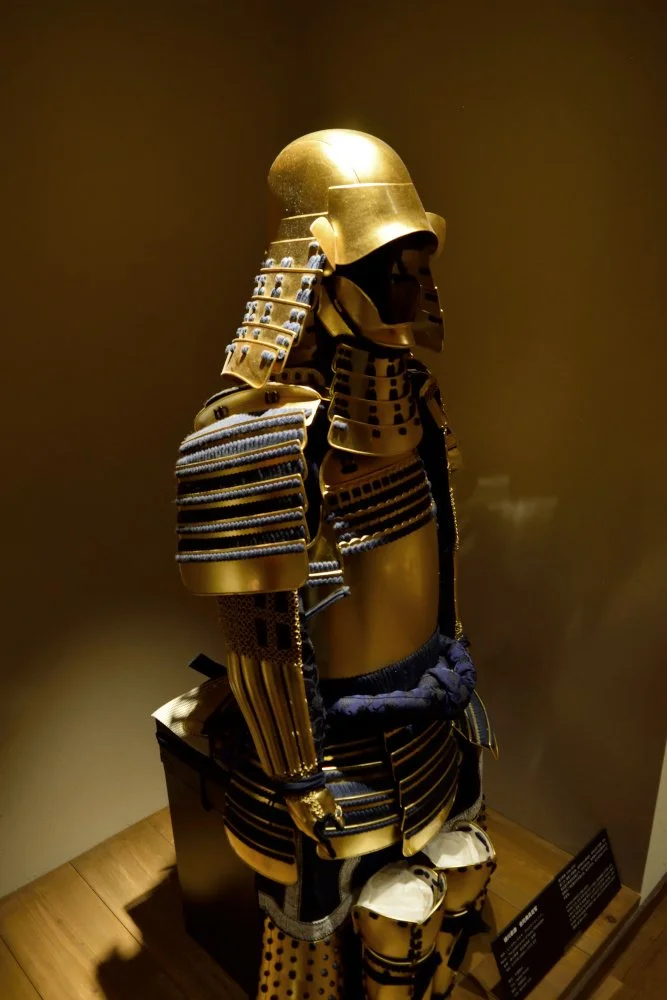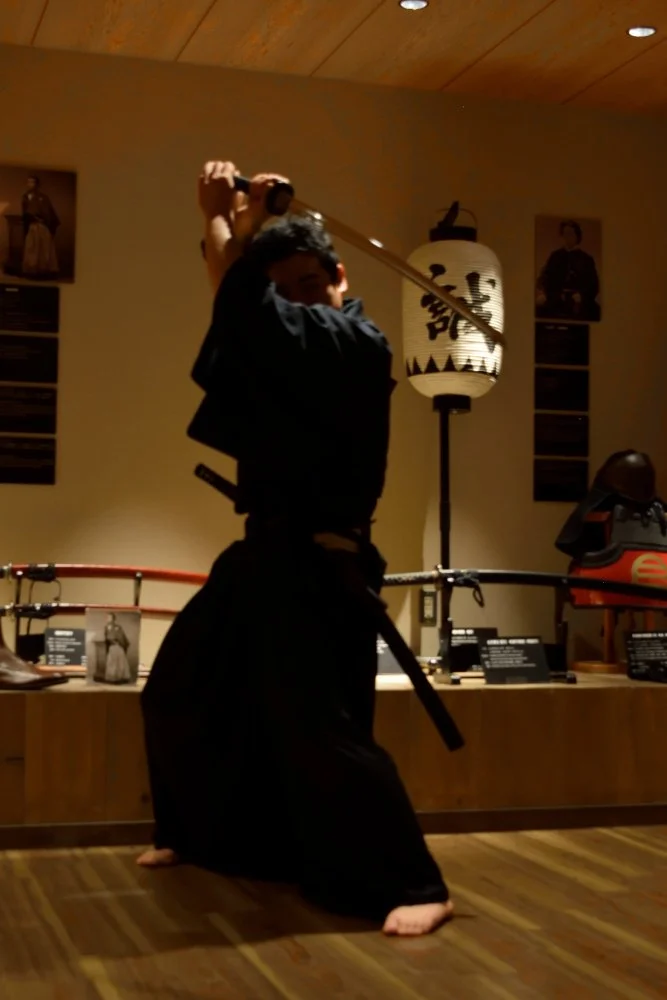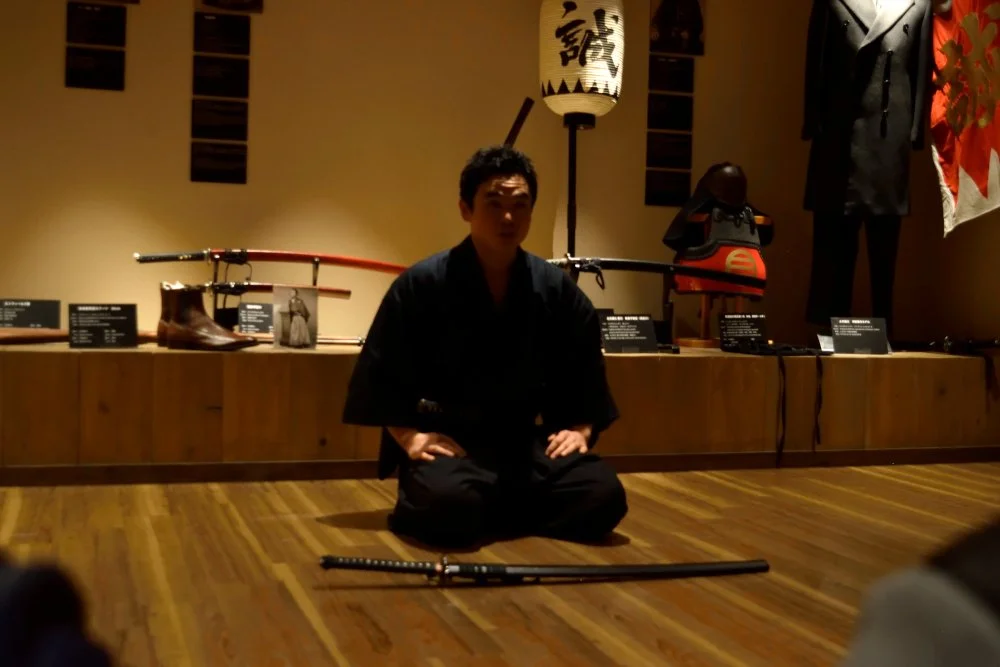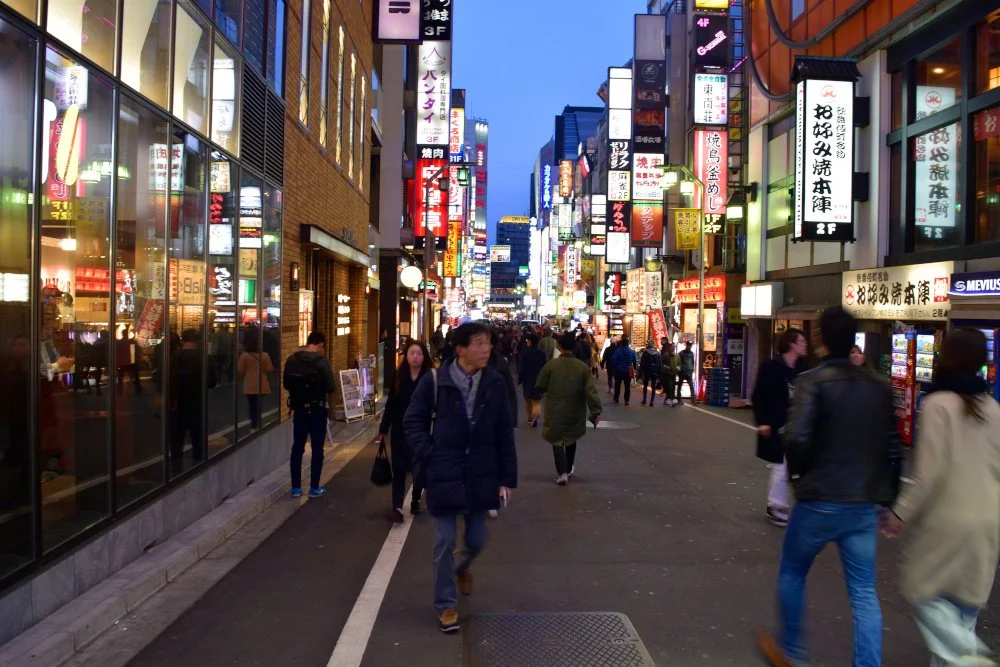Anniversary Blog 19 - Tokyo Part 2: Electric Shinjuku
Our Tokyo adventure continued after our baikingu (all you can eat breakfast) at the hotel. We headed for the Shinjuku area of Tokyo. We decided to take the long way around the city so we could scope out other areas we might want to visit and just enjoy the people watching on the train system.
First, we checked out the world famous intersection that’s just epic chaos that you’ve probably seen a million times in videos. It’s interesting to see how similar and how different metro areas are around the world. On one hand, you could definitely see this area being plopped into almost any major city in the US. Definitely could have swapped it out with some parts of Chicago. Like the Shibuya Scramble Crossing
We walked to the Meiji Jingu Shinto Shrine area. I love the shrines around Tokyo. They all have their own distinct flair and energy. It’s like seeing catholic churches in South America where they all have their own vibe. This shrine is dedicated to the deification of Emperor Meiji and his wife, Empress Shōken (even though the emperor’s grave is actually located south of Kyoto). We caught a Japanese wedding. It was an interesting, if not solemn affair compared to western weddings.
From there we went and grabbed a snack at the famous Lawson’s. This convenience store actually has its origins in Ohio, but by some strange quirk of fate is far more popular in Japan than it ever could be in America. Japanese convenience stores and vending machines are out of control. Just about everything you could want is somehow not only available, but so much fresher and tastier than anything we have available here in the states.
We explored the area more and stumbled upon the Japanese Sword Museum. Owning a sword was outlawed after the Japanese surrender at the end of World War 2 as both military and civilians were ordered to turn in their weapons. Swords that were in people’s families for generations were confiscated and destroyed by the Allies. Some survived though, and this museum has an amazing collection of swords built across the ages.
We worked our way to Shibuya’s busier area. It’s like a weird mini-vegas/new orleans vibe with all the signage and welcoming storefronts. There were bars, restaurants, arcades, and all kinds of other entertainment on offer.
We found the Samurai Museum. At first it looked so corny that we almost skipped it, but then we remembered that some of our favorite places back home are pretty corny (shout out to Dinosaur World in Florida), so why not check it out. When in Rome, right?
Yuri was our guide, and she gave an amazing tour. We learned the history of samurai and got to see recreations and authentic pieces of weapons and armor. We then got to see a demonstration from a “sword master”. It was a great evening, and I almost bought a sword… should have.
Afterward, we got to experience one of those situations that makes you wonder about the differences between celebration and appropriation as the staff were very insistent that we put on samurai/geisha costumes and pose for the camera. We did it cheerfully because they were so adamant, but definitely leaves a weird taste in your mouth every time you’re experiencing a different culture and they try to get you to play dress up. They all seemed happy enough though.
The night was upon us as we walked out of the museum looking for something to eat. Our final meal in Tokyo drew us to the infamous “Piss Alley”, aka Omoide Yokocho. For the record, the area does not smell like piss at all. It is however dotted with narrow alleyways with tons of tiny bars and restaurants. Yakitori and bar crawling seemed to be the name of the game. Yakitori is just grilled meats, and almost every little shop had a small grill, a couple of chairs, and plenty of cold beer. We stopped from stall to stall sampling delicious grilled snacks and drinking local brews until we were stuffed and buzzed.
A couple of crispy creamy treats from Croquant Chou Zakuzaku and we headed back home. Tokyo did not disappoint. We had an amazing time, and ate so much good food it was hard to say goodbye. But we had so much more to explore in Japan. Tokyo wasn’t scheduled to have them until 2020 (COVID what?), but our next stop was the Nagano area, home of the 1998 Olympics.





